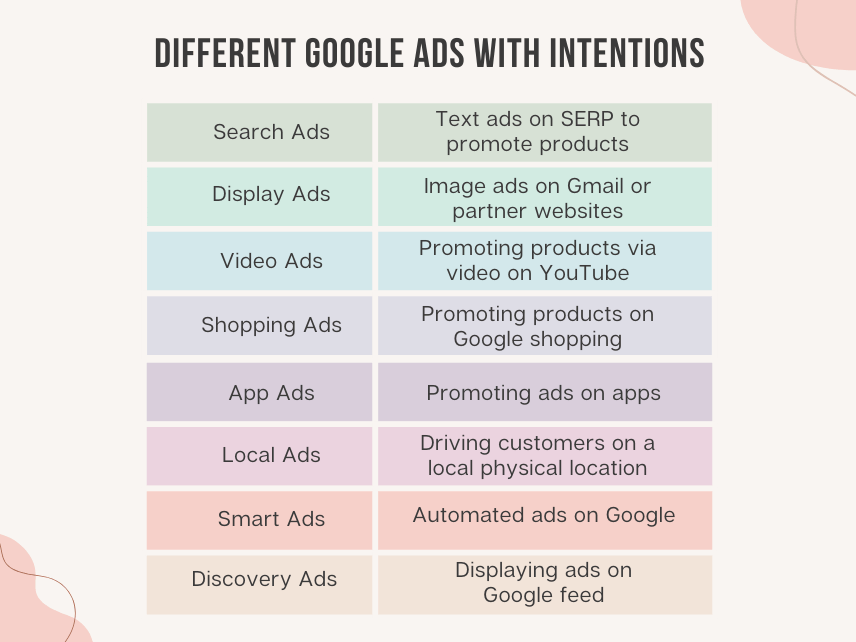Discover how to boost your sales with Product Listing Ads as we delve into the world of targeted advertising strategies.

Image courtesy of via DALL-E 3
Table of Contents
- Introduction to Product Listing Ads
- How Product Listing Ads Work
- Setting Up Your First Product Listing Ad
- Choosing the Right Products for Your PLAs
- Optimizing Your Product Listing Ads
- Tracking and Analyzing PLA Performance
- Common Mistakes in Product Listing Ads
- Future Trends in Product Listing Ads
- Conclusion
- Frequently Asked Questions (FAQs)
Introduction to Product Listing Ads
Welcome to the world of Product Listing Ads (PLAs)! In this section, we’ll dive into what PLAs are all about and how they play a significant role in helping businesses boost their sales through targeted advertising.
What Are Product Listing Ads?
Product Listing Ads, or PLAs for short, are a type of advertising that displays images of products, along with their prices and other essential details, to catch the attention of potential customers. Imagine seeing a picture of a cool toy or a trendy dress with its price right below when you’re browsing online – that’s a product listing ad!
Why Are PLAs Important?
PLAs are crucial for businesses because they help showcase products directly to interested shoppers, making it easier for them to find what they’re looking for and ultimately leading to more sales. By using targeted advertising, businesses can reach the right audience at the right time, driving sales and growing their customer base.
Ready to learn more about how PLAs work and how you can harness their power to drive sales? Let’s dive in!
How Product Listing Ads Work
In this section, we’ll delve into how Product Listing Ads (PLAs) operate to help businesses showcase their products effectively and drive sales through targeted advertising.
Where Do PLAs Appear?
PLAs can be prominently seen on various platforms, with Google Shopping being a popular choice for displaying these ads. Additionally, PLAs can also appear on search result pages, offering a visual representation of products to entice potential customers.
What Information Do PLAs Show?
When users come across a Product Listing Ad, they will typically see vital information such as the product image, title, price, and the name of the store selling the item. These details help customers make informed decisions and create a seamless shopping experience.
Setting Up Your First Product Listing Ad
Ready to launch your first Product Listing Ad (PLA) campaign? Follow these steps to set up your PLA and start selling more products!

Image courtesy of voymedia.com via Google Images
Creating a Merchant Center Account
To get started with PLAs, you’ll need to create an account on Google Merchant Center. This platform allows you to manage your product data and create your ad campaigns. Sign up for an account by providing your business information and verifying your website. Once your account is set up, you can start uploading your product feed.
Uploading Your Product Feed
Now that you have your Merchant Center account, it’s time to upload your product data. Make sure to include all the necessary fields, such as product name, price, description, and image URL. This information will be used to create your PLA ads and showcase your products to potential customers. Keep your product feed up to date to ensure that your ads reflect your current inventory and pricing.
Choosing the Right Products for Your PLAs
In this section, we will guide you on selecting the most suitable products for your Product Listing Ads (PLAs) to ensure maximum impact on your potential customers.
Highlighting Best-Sellers
When deciding which products to showcase in your PLAs, it’s beneficial to prioritize your best-selling items. These are the products that have proven to be popular among customers and are more likely to attract attention. By featuring your best-sellers in PLAs, you increase the chances of driving sales and capturing the interest of potential buyers.
Considering Seasonal Products
Another strategy to enhance the effectiveness of your PLAs is to consider featuring seasonal or trendy products. Seasonal items are often in high demand during specific times of the year, making them appealing to shoppers. By aligning your PLA campaigns with seasonal trends or special occasions, you can capitalize on customer preferences and increase the relevance of your ads.
Optimizing Your Product Listing Ads
In this section, we’ll discuss how to enhance your Product Listing Ads (PLAs) to make them more appealing to potential customers.

Image courtesy of cdmginc.com via Google Images
Using High-Quality Images
When creating your PLAs, it’s crucial to use high-quality images of your products. Clear and attractive visuals can grab the attention of shoppers browsing online. Make sure your photos are well-lit, in focus, and showcase your products in the best possible light. Avoid blurry or pixelated images, as they can deter customers from clicking on your ad.
Writing Effective Product Titles
Another important aspect of optimizing your PLAs is crafting compelling product titles. Your title should be descriptive, engaging, and highlight the key features of the product. Use relevant keywords that customers may be searching for to increase the chances of your ad being displayed. Keep your titles concise and to the point, making it easy for shoppers to understand what you’re offering.
Tracking and Analyzing PLA Performance
Tracking and analyzing the performance of your Product Listing Ads (PLAs) is essential to understanding how effectively they are reaching potential customers and driving sales. By utilizing tools to collect and interpret data, you can make informed decisions to optimize your PLA campaigns for better results.
Using Analytics Tools
One of the key elements in tracking PLA performance is using analytics tools such as Google Analytics. These tools provide valuable insights into metrics like click-through rates, conversion rates, and revenue generated from your PLAs. By regularly monitoring these data points, you can identify which products are performing well and which may need adjustments to improve results.
Making Data-Driven Improvements
Once you have gathered data on your PLA performance, it’s important to use this information to make data-driven improvements. For example, if you notice that a particular product is receiving a high number of clicks but few conversions, you may need to reassess its pricing or product description. By continuously analyzing the data and implementing changes based on your findings, you can fine-tune your PLA campaigns for optimal performance.
By understanding how to track and analyze PLA performance, you can make strategic decisions to enhance the effectiveness of your advertising efforts and drive more sales for your business.
Common Mistakes in Product Listing Ads
One common mistake in Product Listing Ads is using poor quality images. When your product images are blurry or unclear, it can turn off potential customers. Remember, the image is the first thing shoppers see, so it needs to be visually appealing and accurately represent the product you’re selling. Investing in high-quality images can make a significant difference in the success of your PLAs.

Image courtesy of webappick.com via Google Images
Incomplete Product Information
Another mistake to avoid is providing incomplete product information in your ads. Customers rely on the details you provide to make informed purchasing decisions. If essential information like product specifications, sizes, or colors is missing, shoppers may be less likely to click on your ad. Take the time to ensure that all necessary product details are included to give customers the information they need to make a purchase.
Future Trends in Product Listing Ads
One exciting trend in the world of Product Listing Ads (PLAs) is the integration of artificial intelligence (AI) and machine learning. These advanced technologies are revolutionizing how businesses target potential customers with their ads. By analyzing vast amounts of data, AI can help personalize PLAs to individual shoppers, increasing the chances of conversion. Machine learning algorithms can also optimize ad placement and bidding strategies in real-time, leading to more effective and efficient advertising campaigns.
Voice Search and PLAs
Another upcoming trend that could significantly impact PLAs is the rise of voice search. With the increasing popularity of voice-activated devices like smart speakers and virtual assistants, more consumers are using voice commands to search for products online. As a result, businesses will need to adapt their PLAs to align with this shift in search behavior. Optimizing product data for voice search queries and creating voice-friendly ad content will be crucial in reaching these potential customers effectively.
Conclusion
Throughout this article, we have explored the world of Product Listing Ads (PLAs) and their role in driving sales through targeted advertising. Let’s recap the key points we’ve learned about PLAs and their significance in e-commerce.

Image courtesy of venngage.com via Google Images
Recap of Key Points
We started by understanding that Product Listing Ads are a form of advertising that showcases product images, prices, and details to attract customers. These ads are essential for businesses as they play a crucial role in increasing sales and expanding reach. PLAs work by appearing on platforms like Google Shopping and search result pages, displaying vital information like product images, titles, prices, and store names. Setting up PLAs involves creating a Merchant Center account and uploading a product feed with essential details.
When choosing products to feature in your PLAs, highlighting best-sellers and seasonal items can maximize their impact. Optimizing PLAs with high-quality images and effective product titles is essential for attracting potential customers. Tracking and analyzing PLA performance using tools like Google Analytics can help in making data-driven improvements.
Final Thoughts
In conclusion, mastering the art of Product Listing Ads can significantly benefit businesses in the competitive e-commerce landscape. By avoiding common mistakes, embracing future trends like AI and machine learning, and adapting to innovations like voice search, businesses can stay ahead of the curve and drive sales through targeted advertising. Remember, with a strategic approach and continuous optimization, PLAs can be a powerful tool for boosting revenue and reaching a wider audience.
Frequently Asked Questions (FAQs)
Here are some common questions you may have about Product Listing Ads:
What are PLAs and How Do They Work?
Product Listing Ads (PLAs) are advertisements that showcase product images, prices, and other details to entice potential customers. These ads appear on platforms like Google Shopping and search result pages, making it easier for shoppers to find and compare products. By displaying key information upfront, PLAs help businesses attract more customers and drive sales.
How Do I Set Up My First PLA Campaign?
To set up your first PLA campaign, you’ll need to create an account on Google Merchant Center. This platform allows you to manage your PLAs and upload product data, including important details like product name, price, and description. Once your account is set up, you can start uploading your product feed to show your products in PLAs and reach potential customers.
How Can I Improve My PLA Performance?
To enhance the effectiveness of your PLAs, consider using high-quality images that showcase your products in the best light. Additionally, crafting descriptive and compelling product titles can attract more attention from shoppers. Analyzing the performance of your PLAs using tools like Google Analytics can provide valuable insights to make data-driven improvements and optimize your campaigns for better results.







